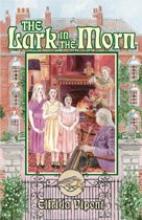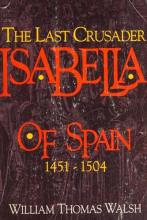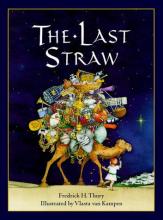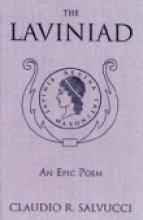No name
The Lark in the Morn
The Lark on the Wing
The Last Crusader: Isabella of Spain
Queen Isabella (the Catholic) of Spain is one of the most influential and controversial women in history. She and her husband were responsible for supporting Columbus' voyages to the New World, the re-conquering of all of Spain from the Moors, the expulsion of the Jews, and the establishment of the Spanish Inquisition. Her daughter, Catherine of Aragon, was the unfortunate first wife of King Henry VIII of England (who founded the Anglican church because he didn't accept the Pope's refusal to grant him an annulment of his marriage to Catherine). The story is fast-paced and gripping (as well as complex), but also very sad and even disturbing at times. It's an important period of history for Catholic to understand as many aspects of this story are frequently used to attack the Church. Reading the whole story will also dispel some common myths about history in general – particularly ones that try to make blanket statements about history and assumptions that as history progresses things always get worse.
Recommended for upper high school or adult.
This book mentions at least one disturbing story of violence against a child that appears to follow the pattern of anti-Jewish myths debunked by the Church as early as Gregory X's 1272 document on "Papal Protection of the Jews". The link takes you to the document at the EWTN Library. In addition to reading this document (which particularly highlights problems with Christian violence against the Jews), further discussion and research are recommended on this topic.
The Last Lecture
His last lecture can be viewed on YouTube: Randy Pausch The Last Lecture: Achieving Your Childhood Dreams.
In order to appeal to a wider audience, he avoids how his faith played a role in the development of his character.
The Last Straw
To celebrate Christmas, in addition to baking Christmas cookies, setting up the manger scene, decorating the tree, and numerous other seasonal activities, we also like to pause in out preparations to cozy up together and read good books that encapsulate the true meaning of Christmas. The Last Straw by Frederick H. Thury is one such book.
Hoshmakaka is a grumpy, old camel, who would rather do anything than carry gold, frankincense, and myrrh to Bethlehem. He is sleeping peacefully one night when he is visited by voices informing him that the wise men have chosen him for this task. He balks at the idea, providing feeble excuses, but when a furious wind blows the sand, he changes his mind.
The next day as the servants of the wise men are placing the precious gifts on his back a group of young, admiring camels comments that he must be very special. His pride puffed up, he brags that he is “as strong as ten horses” and then allows the young camels to accompany him along the journey. This could be his downfall. Will they find out the truth?
Along the way, one after another person or animal begs Hoshmakaka to carry a gift to the newborn king, creating a mountainous pile on his back. Finally, he comes within sight of Bethlehem. Feeling the strain of the weight, he doubts he will make it when a small voice asks him to carry one more gift for the baby.
Can he do it? Will he make it?
The pictures are delightful. My children enjoyed picking out the gifts piling up on his back. It has also become a familiar line in our home to say, “My joints, my gout, my sciatica.” And the ending is superb! All ages will enjoy this wonderful story.
The Laviniad
First the story: The author successfully writes in the style of the ancient epic in modern English, picking up the thread of the story of the Aeneid. The Laviniad takes up the tale of the Trojan settlement of Latium following the death of Aeneas. His son, Ascanius, assumes the leadership and almost immediatley must deal with the threat of Italians still hostile to the Trojan presence.
There are some pleasant similarities to the ancient epics, such as prophecies that are fulfilled in not quite the way the people expect, and the descriptions of the deaths of the heroes. The Trojans prevail in the end and Lavinia, Aeneas' widow gives birth to his child, the true and final mix of the blood of the Latins and the Trojans. Hope is restored to a people wearied by years of war and loss of life. Lovers of classic tales will really appreciate the poetry and the plot.
The poem reads easily and naturally with the flow and flavor of the ancient epics. A complete glossary in the back will help anyone who has not read the Aeneid or the Iliad to understand the relationship of the characters and the various names of the Greeks, Trojans, and Latins. It is not, strictly speaking, a sequel, however, a knowledge of the events of the Aeneid is helpful. A highschooler could appreciate the story whether or not he has read the Aeneid.
Now the book: I learned from the publisher that the author hand makes each book, binding and all! The story is printed on parchment and handsewn, not glued. The outer cover is a light blue cloth cover. It is a beautiful, elegant edition, wonderful for gift giving.
Binding details: Hardback with cloth covering
The Legend of Odysseus
The Legend of the Poinsettia
Feeling more courageous, Lucida picks a bundle of weeds and brings them to the Baby Jesus in the manger scene at church, where they are beautifully transformed.









